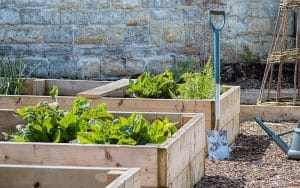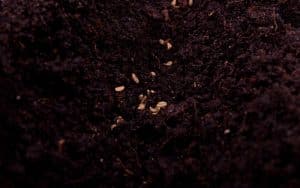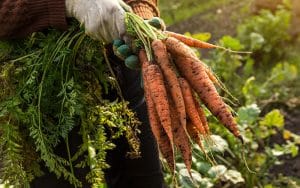How to sow and grow carrots UK
Sweet, crunchy, and delicious, carrots are a great veg to get growing in your school or community garden, today!
Carrots are a compact veg. They take up little space, look a little more unique, and, of course, taste even better than shop bought. Plus, they come in all different shapes and colours. Did you know carrots were originally yellow and purple? So, you can have endless fun guessing whether yours will be purple, long, orange, or round, as you pull them from the ground! And you might find yourself wondering, can something so sweet and delicious really be that good for you?
Are carrots good for you?
Yes! Not only are carrots a great addition to soups, stews, and roast dinners, they're also an excellent edition to your diet. And here's why:
- Carrots are high in plant compounds called ‘carotenoids’. Usually found in the tastiest bit, the root! We convert carotenoids into vitamin A, which plays an important part in eyesight. That’s why you might have heard the rumour that carrots help you see in the dark…
- Carrots are a great source of fibre, which means they’re great for making you feel nice and full. Plus, because they’re naturally sweet. So, they make a great substitution for processed sugar treats.
- They’re full of vitamin C, which is great for heart health and cholesterol balance.
So, why not help keep your school or community fit and healthy and get sowing today!
How do you grow carrots?
1. Choose the right spot.

Carrots grow beset in full sun, in light, fertile, well-drained soil. However, if your find that your soil is a bit stony, shallow, heavy clay, so try short-rooted types. And if you find you've got issues with soil, planting in raised beds is a great way to combat this.
The main sowing season is April to July. However you can sow early varieties from February and March. Just make sure you keep them warm with some horticultural fleece.
2. Get sowing.

Sow your seeds as thinly as possible, around 1cm deep, in rows 15-30cm apart. They can take a while to get germinating, so be patient. The results will be worth it. Sowing in small batches every three to four weeks mean you’ll get a continuous harvest, too!
Also, be wary that slugs and snails can damage your seedlings, so put some protection in place. Why not try growing some slug-resistant plants, nearby?
3. Show them some love.

Once the seeds have been sown, Carrots are pretty low maintenance. But there are things you can do to make sure your carrots are happy. They’re drought-resistant, however, in long, dry spells it’s a good idea to soak them.
And make sure you’re regularly removing weeds. Hoeing between rows. But try to avoid disturbing the foliage! The smell can attract carrot fly. You can protect your carrots from carrot fly by covering your crops with horticultural fleece or pest-proof mesh.
4. Harvest time.

Your carrots should be ripe and ready around 12-16 weeks after sowing. Harvest them as soon as they’re big enough to use. Bigger isn’t always better, as bigger sizes lose their flavour.
Gently pull on the carrot’s foliage to pull them from the soil. The best time to harvest is spring when carrots are young, sweet, and crunchy. Ideal for eating raw. Just make sure you give them a rinse first.
5. Grubs up...

As we mentioned earlier, carrots are super versatile. And you’ll certainly be able to cook them into something that everyone and anyone in your school or community garden can enjoy. Consider salads, soups, or stews, for example. All great on-the-go meals for busy gardeners like you!
Where and how do you store carrots?
As they’re a root vegetable, carrots are great veg to carry you through winter. And there’s several ways to store them. But before storing them, make sure they’re in good condition and shake off any loose soil.
On well-drained soil, they can be left in the ground, protected from frosty temperatures by layers of straw, bracken, or soil. This probably isn’t the best storage solution, however, as it can be difficult to harvest them.
Instead, consider building a veg clamp. These are efficient and inexpensive ways of storing root vegetables, where you insulate them with straw and soil. Plus, actually constructing a clamp can be a brilliant team activity for schools and communities. Why not get started today?
And there you have it! A quick and simple guide to growing impressive and delicious carrots. And if, on the off chance nobody in your school or community likes carrots, they also make great snacks for horses, dogs, and even birds!

